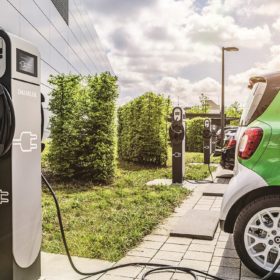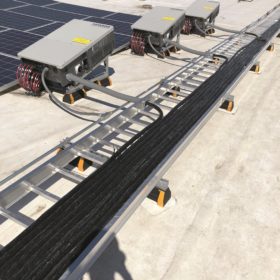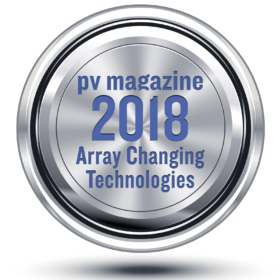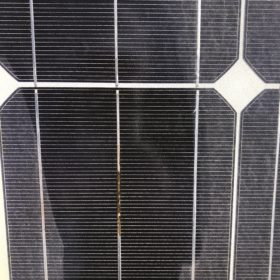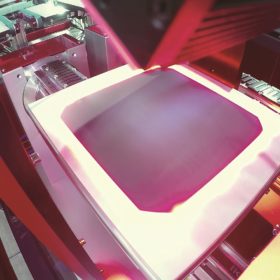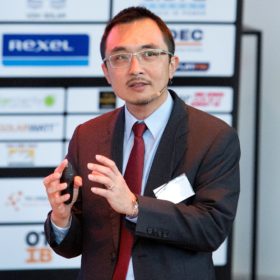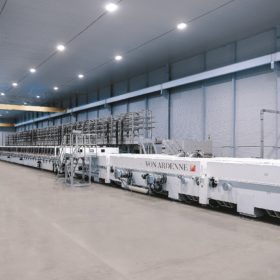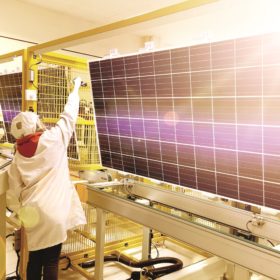EV charging meets Blockchain
There are a number of reasons to be bullish on electric vehicles. Government support is growing, battery prices are falling, and the technology is constantly developing. But, for the prospect of owning an electric car to become even more attractive, existing EV charging infrastructure needs to be enhanced. This is where blockchain comes in.
No shock for US rooftops
As solar power approaches two million rooftops in the United States, the National Electric Code (NEC) has become increasingly demanding in the name of protecting first responders. Starting in 2014, the NEC began an evolution with a goal of reducing the risk of shock hazard when fighting fires. The pathway would be via“rapid shutdown.”
Array Changing Technologies
As another year of solar innovations marches on, with exciting new products and models being introduced up and down the supply chain, pv magazine has brought together a jury of industry experts to honor those technologies whose potential is truly Array Changing. Here, we’ve added another 10 innovations to those featured back in June, and tasked our expert jury with deciding on five standout entries from the list.
These select finalists will also qualify as candidates for the inaugural pv magazine Award, which will be given at the end of the year and cover all of the industry’s major segments. First though, a preview of 10 new products added to the list since June.
A factor of 10
Solar power plants not only need to be built, but also operated, monitored, and maintained. Many approaches to digitalization promise to make these plant management processes significantly more efficient – up to a factor of 10.
Self-consumption and remote control
With energy increasingly going digital, and the reduction or removal of solar subsidies in many leading markets, it’s an exciting time for inverter technology. pv magazine had the chance to catch up with Justin Claxton, Global Strategic Manager at China-based inverter supplier SolaX Power, on the company’s latest market moves and innovations.
Backsheets to the future
As backsheet manufacturers aim to keep up with cost reductions up and down the PV supply chain, new processes and materials are appearing, with claims to offer better performance as a moisture barrier, as well as better acetic acid permeability and higher reflectivity, among other features. pv magazine examines the state of the market for PV backsheets, and takes a look at some of the new material innovations that are gaining ground with module manufacturers.
Taking the wrap
It’s nothing new, but at this scale and in Europe it represents a significant endeavor. The team from Dutch startup module maker Energyra is currently overseeing the assembly and installation of a hulking multi-stack laminator from SM InnoTech, front-end metalization line, and back-end module assembly equipment at its 100 MW fab in Holland’s Zaanstad region. And beyond bringing module production back to Europe, the Energyra endeavor is notable for its choice of technology: metal wrap through (MWT) PERC.
Why can’t LID be completely removed in PERC cells?
Jay Lin, CEO of PV Guider discusses why the effects of light-induced degradation (LID) in PERC cells cannot be completely eliminated. To explain the difficulty, we first need to understand the LID behavior of the cells, he says.
Patchwork of progress
The years 2017 and 2018 have seen a revival of thin film manufacturing plans, most promisingly in China. However, the 31/5 policy changes have led to unstable footing on which to base capacity expansions – a situation lost on none, including reigning thin film giant First Solar.
Nobody said it was easy
Solar manufacturing industries have shown similar characteristics across Latin America: low to medium technological level (with very few exceptions), relatively small capacities, high dependence on national policy, limited scope of exports, need for more automation, and lack of vertically integrated manufacturing. Here, pv magazine provides a snapshot of manufacturing across the region’s leading markets.
